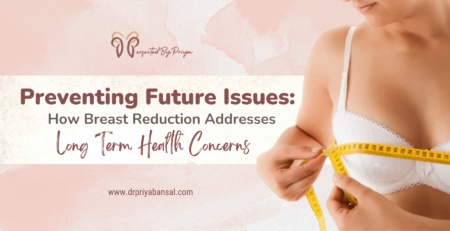Decoding the Bill: Breaking Down Breast Reduction Surgery Cost
Breast reduction surgery is a procedure that can provide relief for women with oversized breasts, alleviating physical discomfort and enhancing their quality of life. However, one aspect that often causes concern for patients considering this surgery is the cost. Understanding the breakdown of the costs associated with breast reduction surgery can help patients make informed decisions about their healthcare. Let’s take a closer look at what goes into the breast reduction cost.
Decoding Breast Reduction Surgery Cost
1. Surgeon’s Fee
The surgeon’s fee is one of the primary costs associated with breast reduction surgery. This fee typically covers the surgeon’s expertise, experience, and the use of their facilities. The complexity of the surgery and the surgeon’s reputation and location can also influence the cost of this fee.
2. Anesthesia Fee
The facility fee covers the cost of using the surgical facility, including operating rooms, recovery areas, and equipment. The fee may vary depending on the location and type of facility where the surgery is performed.
3. Facility Fee
Anaesthesia is administered during breast reduction surgery to ensure the patient’s comfort and safety. The anaesthesia fee covers the cost of the anesthesiologist’s services, as well as the medications and equipment used during the procedure
4. Medical Tests and Supplies:
Before undergoing breast reduction surgery, patients may need to undergo medical tests such as blood tests, mammograms, or EKGs to ensure they are healthy enough for surgery. Additionally, the cost of surgical supplies, medications, and post-operative garments may also be included in the bill.
5. Post-Operative Care:
After breast reduction surgery, patients may require follow-up visits with their surgeon to monitor their healing progress and address any concerns. The cost of these post-operative care visits may be included in the overall cost of the surgery.
6. Additional Costs:
In some cases, patients may incur additional costs associated with breast reduction surgery, such as the cost of prescription medications, special bras or compression garments, and travel expenses if the surgery is performed in a different city or country.
How You Can Make The Procedure Affordable
EMI Options
Many hospitals and surgical facilities offer EMI options for patients undergoing elective surgeries like breast reduction. These options allow patients to spread the cost of the surgery over several months, making it more affordable and manageable. Patients considering breast reduction surgery should inquire about EMI options at their chosen facility to determine if this payment method is available to them.
Insurance
It’s important to note that in some cases, breast reduction surgery may be covered by health insurance if it is deemed medically necessary. Factors such as the patient’s symptoms, breast size, and attempts at non-surgical treatments may influence insurance coverage. Patients considering breast reduction surgery should check with their insurance provider to determine if the procedure is covered and what costs may be associated with it.
In conclusion, understanding the costs associated with breast reduction surgery is an important step in preparing for this life-changing procedure. By knowing what to expect, patients can make informed decisions about their healthcare and financial planning. If you’re considering breast reduction surgery cost and would like to learn more about the procedure, including EMI options and insurance coverage, do schedule a consultation with Dr. Priya Bansal, a board-certified plastic surgeon with expertise in breast reduction surgery.
Dr. Priya Bansal and team are dedicated to providing compassionate care and helping you achieve your aesthetic goals. Take the first step towards a more comfortable and confident you by booking your consultation today.















